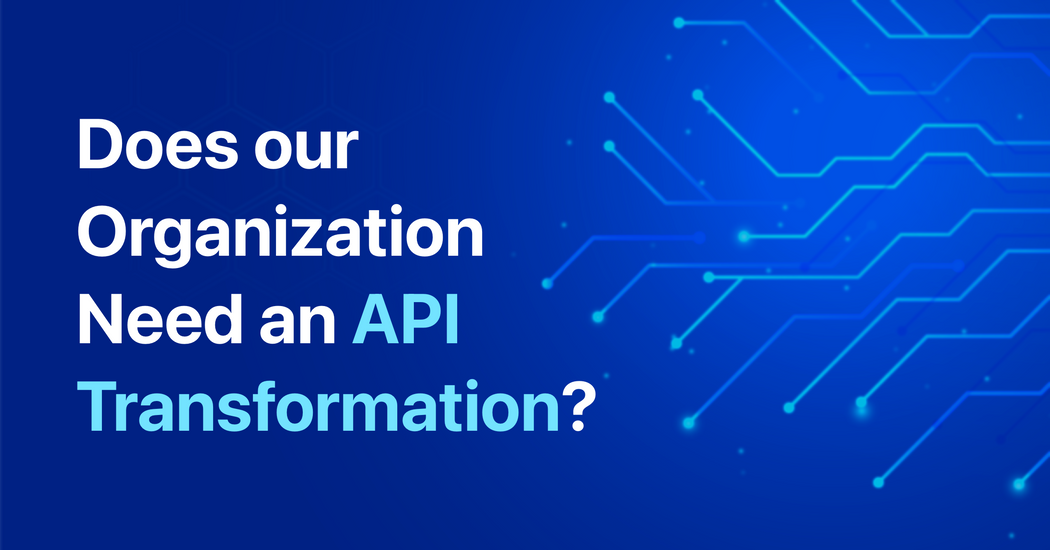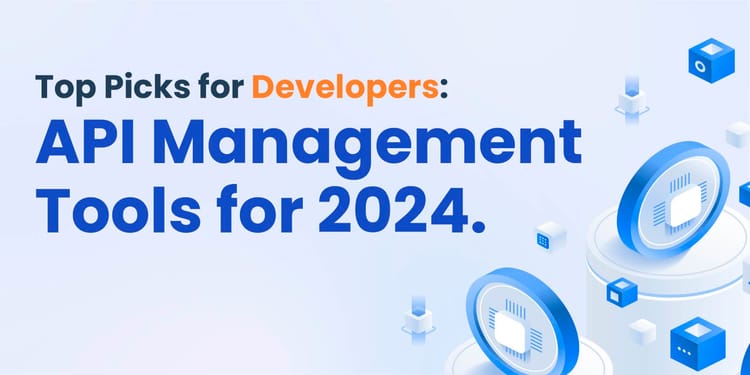Do you know what the top technology priority for large companies is? Digital Transformations. Even higher than cyber security, according to statistica.
The focus on Digital Transformations is up 20% since 2020. It’s grown from 54% of organizations' priority in 2020 to 74% in 2022. Cyber security is a close 2nd at 73% and cloud migration is at 65%.
The shift goes beyond technology. It encompasses an organization's culture too. Companies need to become more agile and intelligent in how they operate. A McKinsey survey with 2,190 respondents found 64% of organizations were in or starting an agile transformation.
The point is: organizations know they need to change. We want to explore what part APIs play in these transformations. Are they significant enough to have a transformation all of their own?

Making Sense of transformations
Let´s play transformation bingo. If you’re in an organization going through a transformation:
- Is the transformation called anything beginning with “re”?
- Bonus points if it’s Re-invent, Re-imagine or Re-focus
- Are there newly introduced roles like Product Owner, Product Manager, Scrum Master, Release Train Engineer
- Do you use practices like a Daily, Retro, Sprint Review, Sprint, Kanban Board
- Is the transformation focused on technology like the cloud, AI, blockchain or a tool like Microsoft teams or Slack
- Are you using a new framework like scrum, kanban, DevOps, or SaFe
Transformations can often feel like a whole new language. They can also mean different things to different people. Most of the time, a transformation team is put in place to help the organization navigate the change.
The transformation team's role is clearly articulating the strategy and value expected from the transformation. They have an allocated budget to staff their team but also fund technology, training, and potential internal and external partners to implement their roadmap.
Part of this roadmap should include monitoring and measuring the progress. This is important to understand the success of the changes but also where adjustments are needed.
They may be focused on a specific technology like the cloud or on a tool like Microsoft teams or slack. Or potentially there is a new strategy or business opportunity the transformation is in service of.
Let’s look next at what it would look like to have a transformation focused specifically on APIs and if that’s a good idea.

What is an API transformation?
We are already in an API transformation. The API management economy is predicted to reach 13.7 billion USD by 2027.
In 2002 Jeff Bezos wrote an API mandate. It’s often referred to as an API manifesto. It outlined 5 clear actions. The 6th point was the consequence if these actions weren’t followed. It was a do-or-get-fired call to action. Clearly, it worked. It resulted in the shift from amazon as a monolith to a microservice platform. This was the origin of Amazon Web Services, now valued at over 1 Trillion USD.
For any organization that doesn’t have a clear API strategy, the Amazon API mandate is a pretty good starting point.
The Amazon API mandate outlines a simple strategy:
An API transformation is more than the software and architecture. It needs a philosophy to achieve its full potential. A set of beliefs that drive behavior for API success.
The philosophy is one of decentralization and distribution. This requires a management style that won’t be taught in a traditional MBA but will be essential for a successful API transformation.
Now that we know what an API transformation would look like, let’s cover the pros and cons of having a focus on APIs for your transformation.

Pros and Cons of an API transformation
The question is: Are APIs part of the wider digital change, or do they deserve a stand-out role?
In a list of API predictions, it was said organizations would start hiring Chief API officers by 2030. This implies APIs have a stand-out role worth a separate focus.

We see a benefit in both a focus on APIs and including them in a wider transformation. Let’s look at the pros and cons so you can decide what’s right for your organization.

Why You Should Have an API Transformation
The benefit of an API-focused transformation is that it will force your organization to have an API strategy. APIs are a critical enabler of any organization's transformation goals. Whether you want to benefit from cloud computing, IoT, AI, or if you want a more agile organization. APIs are essential to bringing about these changes.
A focus on APIs will ensure you have the structures, setup, and philosophy in place. APIs cannot be an afterthought. Their small and simple structure can quickly lead to complexity.
With an API Transformation, there will be a dedicated budget for training and expertise. It will also look past the technology to the cultural changes needed specifically for APIs.
Finally, a transformation will help create API evangelists or advocates in your organization. These are people who understand the use cases of your APIs and can communicate and enable API best practices.

Why You Shouldn’t Have an API Transformation
The risk in an API-focused transformation is that you could lose sight of your broader business goals. APIs are part of an integrated ecosystem that delivers value.
The risk here is that the organization will underestimate the significance of APIs. They may not put the same effort into communication and education on the role of APIs in achieving the transformation goals. There may also be a misalignment in the culture needed for APIs to thrive.
A transformation focused on traditional business goals might not have the same imperative for cultural change.
Our Recommended Approach for Your Transformation
As with all complex decisions, start with the end in mind. If you know the why behind your transformation, it will be easier to decide the best approach for your organization.
We recommend keeping your transformation broad but ensuring you focus significantly on APIs. Bring API expertise and have a budget for training and tools to support your APIs. Have a strategy that maximizes the value of your APIs. Understand how APIs enable your transformation goals.

Beyond Transformations
The most obvious analogy for a transformation is a butterfly. A caterpillar dissolves in a cacoon and emerges as something new.
The cocoon part of the analogy is apt. Transformation requires the dissolution of old structures, behaviors, and beliefs.
The butterfly, however, is less easy to relate to. Is there a point in time when organizations will be transformed?
The process of evolution is a more accurate analogy. It does not end. There are constant, new, and varied threats to survival. There is no one right way or obvious answer. It requires regular and rigorous inspection and adaption.
It is imperative for organizations to transform and to keep evolving. Digital transformation and a clear strategy for APIs are essential. The best place to start is by understanding your current landscape. If you want to see how your APIs are performing, connect them to the Treblle SDK. You will get an instant oversight of where you are on your API transformation journey.
This blog is part of our API strategy series. We’re hosting a workshop to look into the most commonly asked questions and challenges with organizations' APIs. Sign up here to get your personalized invitation.







